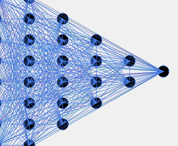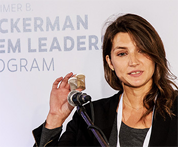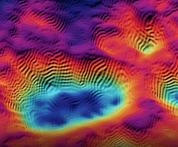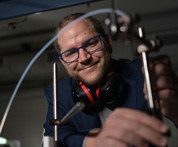For her PhD from The Edmond & Lily Safra Center for Brain Sciences at The Hebrew University of Jerusalem, Shai Berman researched the structure-function relationship in the white matter of the human brain. Brain tissue can be separated into two types: grey matter and white matter. Grey matter is responsible for brain function. White matter enables distant brain regions to connect and communicate. Although white matter is often overlooked, in recent decades there has been a dramatic shift in the perceived role of white matter tissue. This can be attributed to ongoing developments in quantitative magnetic resonance imaging (qMRI).
Dr. Berman became at expert in qMRI and other in vivo measurements, and her PhD provides a comprehensive approach to estimating white matter properties. She ultimately relates her measurements of white matter structure and conduction to patients whose white matter is damaged due to multiple sclerosis.
Dr. Berman’s postdoc at Columbia University, in The Mortimer B. Zuckerman Mind Brain Behavior Institute, concerns the ways that we make decisions based on sensory as well as prior information. What might affect the relative importance of each of these sources for decision making, and what factors could change their integration?
Interoception, which describes the way the brain represents sensations from the body, is the focus of Dr. Berman’s research. She tests the specific effect of body arousal (for example, being hungry) on decision making, within the framework of food choices. Using a combination of functional and structural MRI measurements, Dr. Berman evaluates the roles of different brain regions in decision making and interoception. She also applies these approaches in pathological populations. Patients with amnesia offer a good model for study, because their memory is damaged but their sensory perception remains intact.
 ISRAELI COUNCIL FOR HIGHER EDUCATION
ISRAELI COUNCIL FOR HIGHER EDUCATION MIT-Israel Zuckerman STEM Fund for Faculty Collaboration
MIT-Israel Zuckerman STEM Fund for Faculty Collaboration The Zuckerman Travel and Research STEM Fund at Harvard
The Zuckerman Travel and Research STEM Fund at Harvard Zuckerman AI Fund at Technion
Zuckerman AI Fund at Technion Alan Alda Communicating Science
Alan Alda Communicating Science Zuckerman Institute – ScienceAbroad
Zuckerman Institute – ScienceAbroad Zuckerman Institute – America-Israel Friendship League partnership
Zuckerman Institute – America-Israel Friendship League partnership


























